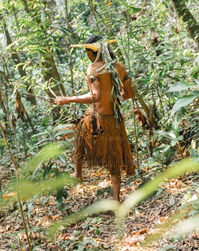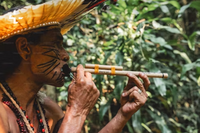Papua Island an extraordinary place located at the easternmost tip of Indonesia and stretching into Papua New Guinea, is renowned for its unique culture, biodiversity, and breathtaking landscapes. Often overlooked by tourists, Papua Island is one of the world’s last frontiers, filled with mysteries waiting to be explored. Here, we delve into everything you need to know about, from its awe-inspiring natural beauty to its vibrant traditions and must-see locations.
Papua Island Geography and Climate

Is the world’s second-largest island, covering over 785,000 square kilometres. The western half of the island is divided into the Indonesian provinces of Papua and West Papua, while the eastern half comprises Papua New Guinea. The island features diverse terrains, from mountainous rainforests and coastal mangroves to coral reefs and grasslands. Its equatorial location brings tropical weather, with warm temperatures and high humidity year-round.
Papua Island Rich Biodiversity Wildlife
One of the most fascinating aspects of Papua Island is its biodiversity. The island is home to some of the most unique flora and fauna, with species that can’t be found anywhere else in the world. In the rainforests, you’ll encounter exotic birds like the Birds of Paradise, cassowaries, and an array of colourful butterflies. Papua’s marine biodiversity is equally spectacular, especially in regions like Raja Ampat, which boasts over 1,300 species of fish and is a paradise for diving enthusiasts. The varied landscapes make a hotspot for conservation efforts, attracting researchers and environmentalists worldwide.
Papua Island The Unique Cultures

Is not only a natural treasure but also a cultural one. With more than 800 spoken languages, it is one of the most linguistically diverse places on the planet. The indigenous tribes, like the Dani, Asmat, and Korowai, have preserved their ancient customs, rituals, and traditional lifestyles. For example, the Dani people celebrate a unique tradition known as the pig feast, where feasting, dancing, and tribal ceremonies form the core of social gatherings.
Visiting Papua Island offers a rare opportunity to engage with these communities. However, visitors must show respect for their customs, especially when visiting sacred sites or engaging in traditional ceremonies.
Raja Ampat – The Crown Jewel of Papua Island
Raja Ampat, located off the northwest tip of Papua Island, is a major draw for tourists. This stunning archipelago consists of over 1,500 small islands, with limestone formations, emerald-green lagoons, and some of the most pristine coral reefs in the world. Scuba diving and snorkelling in Raja Ampat are unparalleled experiences, with opportunities to see manta rays, sharks, and a spectrum of colourful fish in crystal-clear waters.
Beyond the underwater wonders, Raja Ampat also offers lush rainforests, secluded beaches, and island treks. For those interested in ecotourism, it’s possible to stay in eco-friendly resorts or homestays, contributing to the local economy while enjoying the unspoiled beauty of this region.
Adventure and Outdoor Activities on Papua Island

For adventure enthusiasts, Papua Island is a paradise. The following you should not miss the following events:
- Trekking the Baliem Valley-The Baliem Valley in the central highlands offers trekking routes through dramatic mountain scenery, rivers, and traditional villages. This area is home to the Dani people, who still wear traditional attire and practice age-old customs. Trekking in Baliem Valley provides an immersive cultural experience.
- Diving and Snorkeling in Raja Ampa-Papua Island’s Raja Ampat is considered one of the best diving spots worldwide. With incredible visibility, warm waters, and thriving marine life, divers are in for an unforgettable experience.
- Exploring Cenderawasih Bay-Cenderawasih Bay National Park is famous for its whale sharks. Swimming with these gentle giants is a rare experience that puts Papua on the bucket list for marine life enthusiasts.
- Bird Watching in Lorentz National Park-One of Southeast Asia’s largest protected regions, Lorentz National Park is a UNESCO World Heritage Site. Home to several endemic species, this park is a haven for bird watchers and nature lovers.
Travel Tips for Papua Island

Planning a trip to Papua Island requires some research and preparation. Here are a few essential tips:
- Best Time to Visit- ideal time to explore Papua Island is between May and October, during the dry season. This is particularly important for trekkers, as the trails are more accessible, and rainfall is minimal.
- Respect Local Customs- While visiting indigenous villages, respect their traditions, ask for permission before taking photos, and follow local etiquette. Be mindful that many tribes are unfamiliar with tourists, so being respectful and friendly goes a long way.
- Bring Essential Supplies-Papua Island is remote, and supplies can be limited. Pack necessary medications, sunscreen, insect repellent, and other essentials. Note that Wi-Fi and cellular coverage are spotty, so consider disconnecting and immersing yourself fully in the experience.
Conservation Efforts on Papua Island

Papua Island’s ecosystems are under threat from logging, mining, and development. Conservation organisations work to protect its unique biodiversity through sustainable tourism, local community partnerships, and environmental education. Visitors can contribute by choosing eco-friendly accommodations, participating in conservation activities, and supporting local businesses.
Conclusion
Is a destination that rewards those seeking more than the typical travel experience. With its untouched landscapes, vibrant cultures, and unparalleled biodiversity, Papua offers an adventure like no other. Whether you’re diving in Raja Ampat’s coral reefs, trekking through the Baliem Valley, or simply absorbing the tranquillity of its remote beaches, a journey to Papua Island is one that you’ll cherish forever. Embrace the island’s natural wonders, immerse yourself in the traditions of its people, and contribute to the preservation of this precious paradise.
